By Mike Kuchar with Peter Jennings
Offensive Coordinator/QB’s Coach
The University of Wisconsin-Whitewater
Twitter: @PeteyBananas
Heavy run boxes are commonplace when defending the University of Wisconsin-Whitewater. It’s no surprise considering the Warhawks have been 39-4 the last three seasons, averaging over 200 yards a game on the ground. And as the offensive coordinator since 2020, Pete Jennings had to choose to integrate the QB run game just to add a hat back. Naturally, it came in the form of zone read, a Day 1 install that the entire run game stems off of. All levels of the defense can be read depending on the skill set of the QB. This past season read zone averaged 4.92 yards per carry and was efficient 60.2% of the time it was called. His metric for efficiency is as follows: 1st down, 4 plus yards. 2nd down, split the remaining yardage in half. 3rd down, get the first down. 4th down, get the first down.
But while the responsibility of running the play efficiently lies on the quarterback, the challenge of running the play effectively is entirely placed on the backside Tackle who has to correctly identify the placement of the read defender and the technique needed to block him. Wisconsin-Whitewater can read first and second-level defenders based on the ability under Center. "If you have an elite running QB, you need to put that defensive end in conflict," Coach Jennings told me. "But you put a lot of stress on those Tackles to be smart and athletic to understand how to release off that 4i. If you can teach those to your Tackles you can have a huge advantage in your run game.”
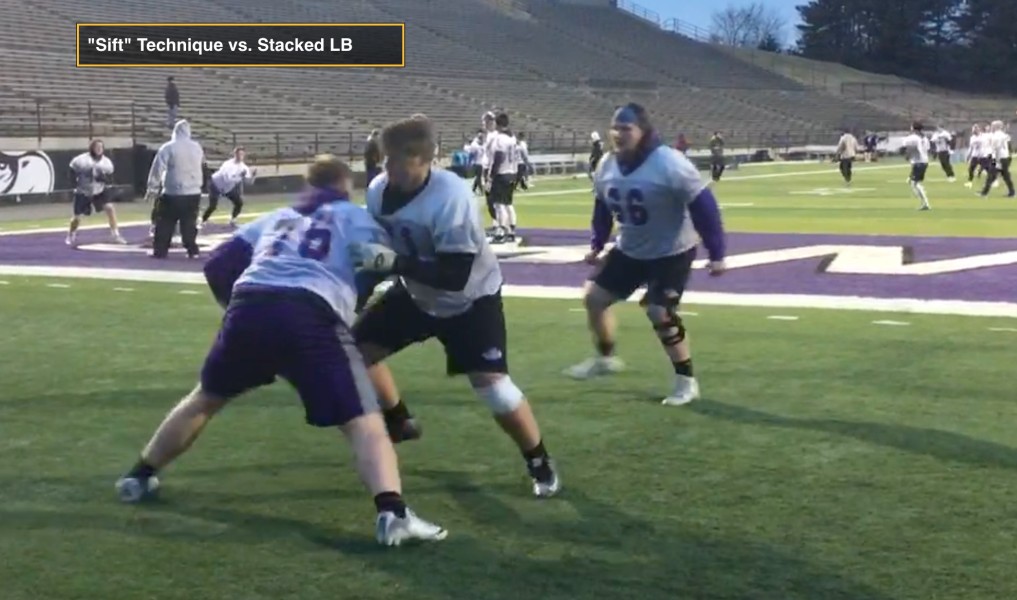
Tight Zone Scheme:
Like the two other programs we profiled recently- Monmouth University and Rice University- the Warhawks teach tight zone as a man concept. The Mike is identified as the point and all combinations work to him. For many of their schemes- both run and pass- they ID the defensive front and the Mike, inside zone is no exception. We can push or pull the point depending on the defensive scheme and or game plan, for the ease of explaining in this article we will say the Mike or “Point” is the middle front LB.
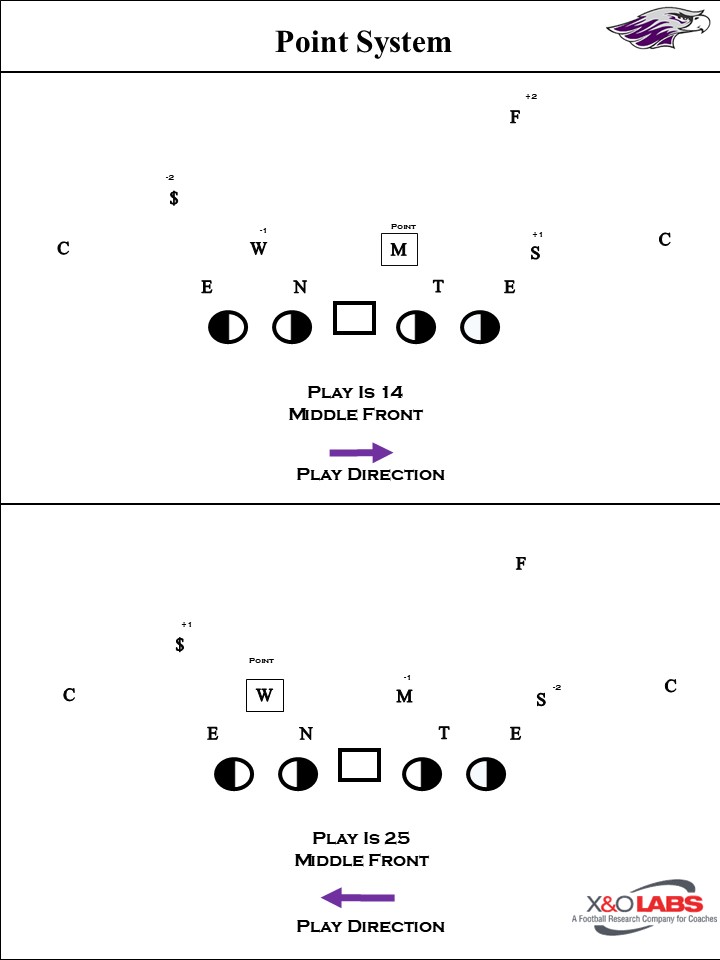
"We call it a zone scheme but in our system, it's really a man scheme," he said. Coach Jennings did tell me that they will push the point against Odd because they won’t get vertical movement. “Tight zone vs. Odd puts the frontside linebacker in a bind in 50 split but he can get beat,” he said. “He can get stuck in a 50 tech waiting to see if the RB cuts back. The 4i is a two-gap player and if he gets beat the RB can jump cut it frontside.”
The proper step depends on the aiming point. It can be a drop step or a zone step. Whatever step is needed to hit the aiming point of the frontside number. But whatever the front step does, the second step must be in the ground as quickly as possible.
Things to know for the OL:
- Point is middle front unless “pushed” or “pulled”
- If you are covered assume man
- If you are uncovered, make the combo call
- Man blocking scheme pre-snap
- Zone blocking scheme post-snap
- 3-point, slightly staggered stance, must be comfortable
- The down hand is side dependent and should carry 30% of body weight
- If covered take a “drop step” 2-4 inches gaining depth and width aiming for the bottom of the defender’s frontside number
- If uncovered take a “bucket step” 4-6 inches gaining depth and width aiming for the midline of the next play side defender
- When in a combo, 2 hands-on, 4 eyes up, do not leave for the LB until you can reach out and touch them, the RB will bring LB's to your combo
- Use "Tip of Spear" when striking. Tip of Spear is a phrase we use to give our guys a visual of their blocking technique. It refers to using the area of the palm where the hypothenar muscles are located, (Area of your palm closer to your wrist) and keeping your thumbs up.
- We ask a lot of our tackles, smart, athletic, crafty
- In RZ we say backside guard-forward is blocking for the give, Backside tackle back is blocking for the pull
RB Declares the Front:
“In our league, we end up seeing a lot of different defensive fronts,” said Coach Jennings. So to try and keep identifying fronts as simple as possible he uses 4 basic families: Even, Pro, Odd, and Bear.
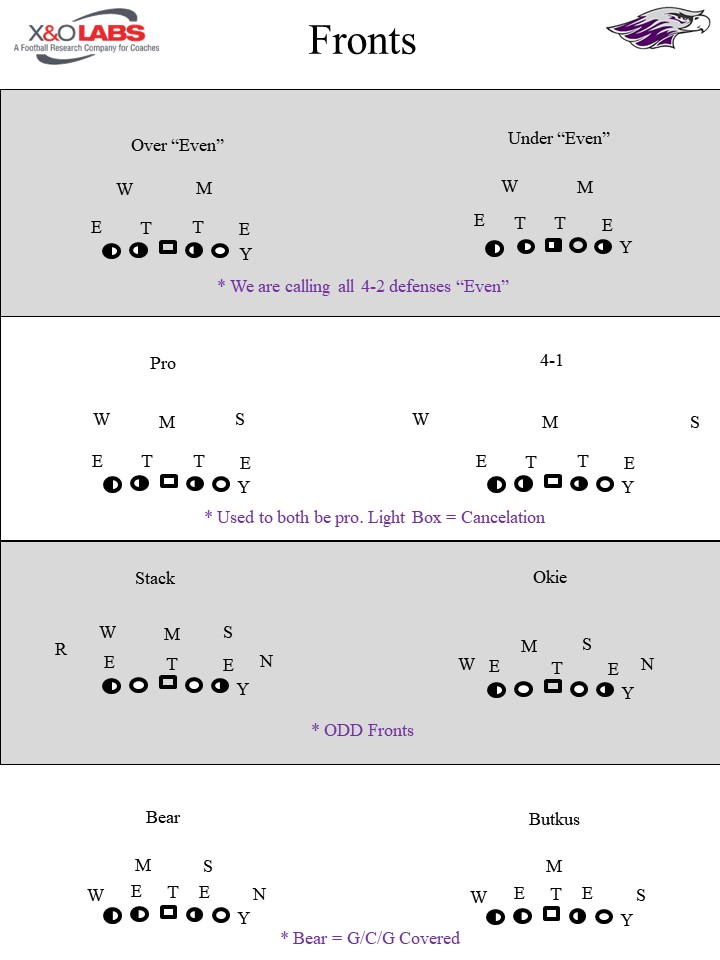
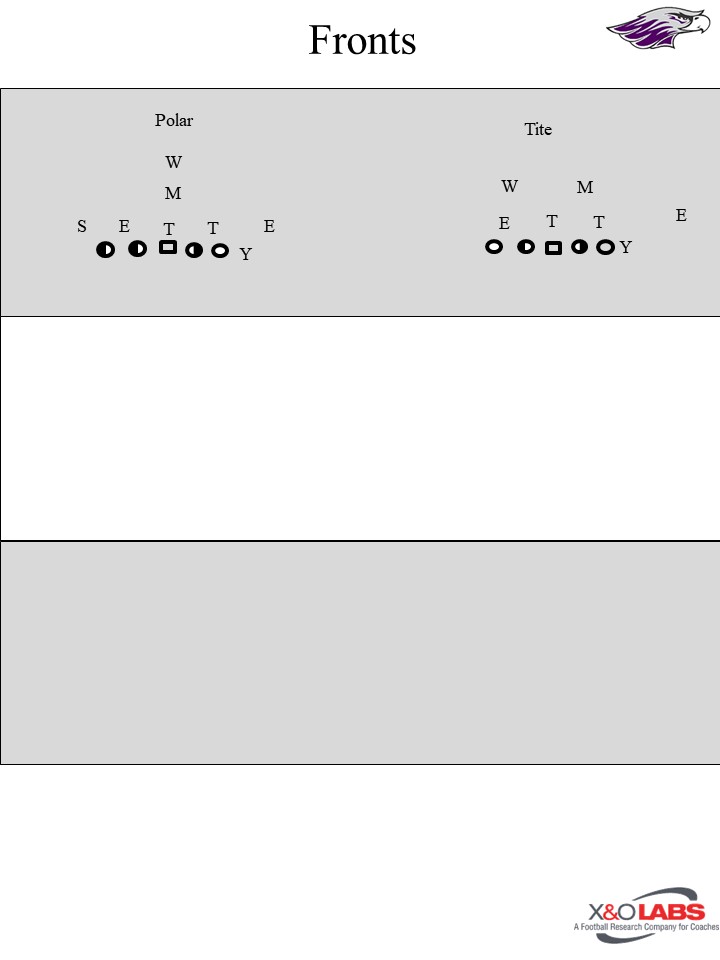
The running back is responsible to identify the front and echo the structure to the wide receivers. That will change the count on the perimeter for wide receivers to block, be it the Sam linebacker, Sky Safety, etc. In the Odd front, the aiming point is the frontside leg of the Guard. In the Even front, the aiming point is the trail leg of the play side Guard. When in Pistol alignments, the play is widened out to the B gap or inside leg of the Tackle. “We just give them a framework and go,” said Coach Jennings. “They need to be responsible for setting up the frontside LB with their path but make a cut off the Guard’s ass on what the Will is doing.”
Slot Receiver Technique:
The slot receiver in zone read is asked to step to the heel of the defensive lineman, rip and put him on his back. When you watch the film it looks like a butt block, but Coach Jennings calls it a “turtle shell”. “We put ourselves between the ball and the defender like a box out in basketball,” said Coach Jennings. “If you watch enough football you watch that slot work his tail off to get on his near shoulder and push the Sam- who can make the play- into the pile.”
Things to know for the WR’s:
- Frontside #1 always error on the side of push cracking
- Frontside #2 responsible for +1 vs even and +2 vs odd
- Backside #2 is always responsible for -2 in some way shape or form
- Backside #1 always error on the side of staying on in case there is a pull
- Slots have inside legs back, the first step is at the heels of the DL, which will utilize a turtle shell if necessary. The turtle shell is a technique remarkably like a box out in basketball. Clip one should show this nicely. Attack your blocking responsibility flat, rip your outside arm through and box out. Get the defender on your back, aka a turtle shell.
- “6-second players, .5 second blockers” this means we don’t need WR’s who block for the entire play. We need WR’s who block for the .5 seconds it takes for the ball carrier to get past the defender they are responsible for. Be patient
Things to know for the QB:
- Clear the midpoint of the mesh when necessary to allow the RB to keep his shoulders square
- Pull the ball if you can beat your read to 4-yards at the sideline
- Touchdown, first down, get down, or get out of bounds
- Crack your wrists on the pull, added stimulus to the running back
- Even on gives you are responsible to pull defenders, carry out your fake
- Understand where the -1 is and if we will get a sift by the backside tackle, a sift is for the QB that's in contact with reading and the Backside OT will sift. If the QB sees, contact between the OT and his read he will give the ball. The sift technique forces the give.
- Contact with the read = Give, live to play another down
Below are how the Warhawks block each of the following fronts in its zone read concept:
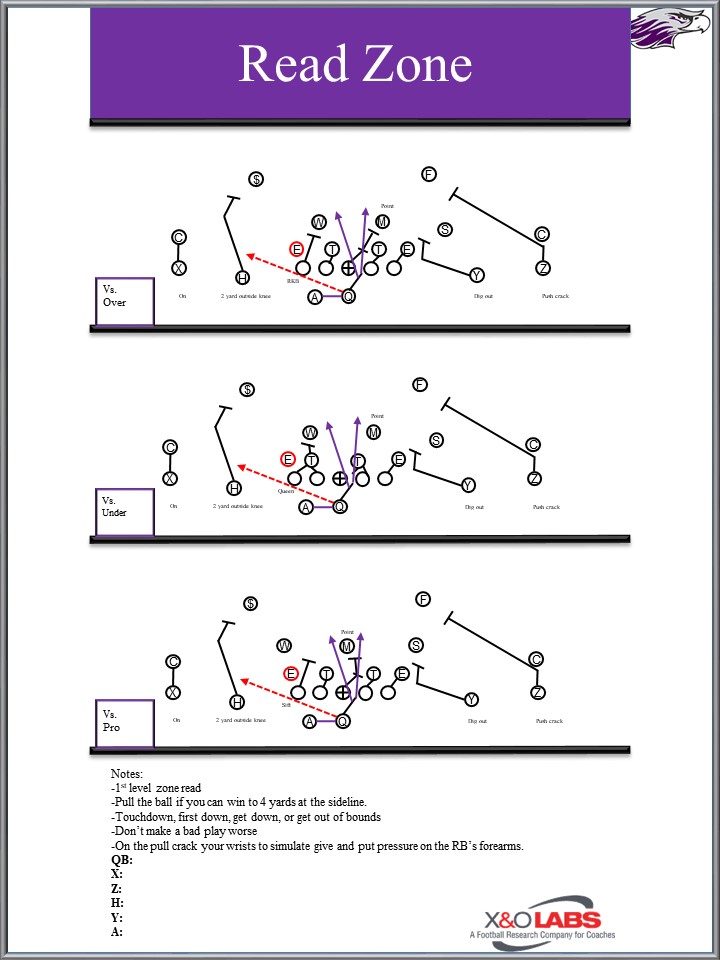
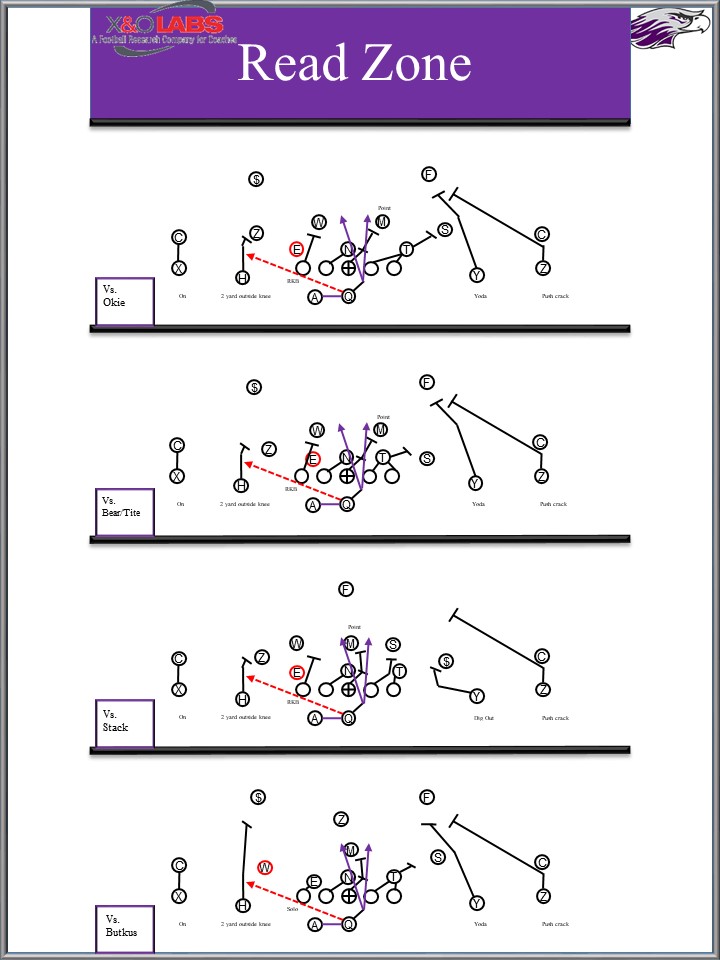
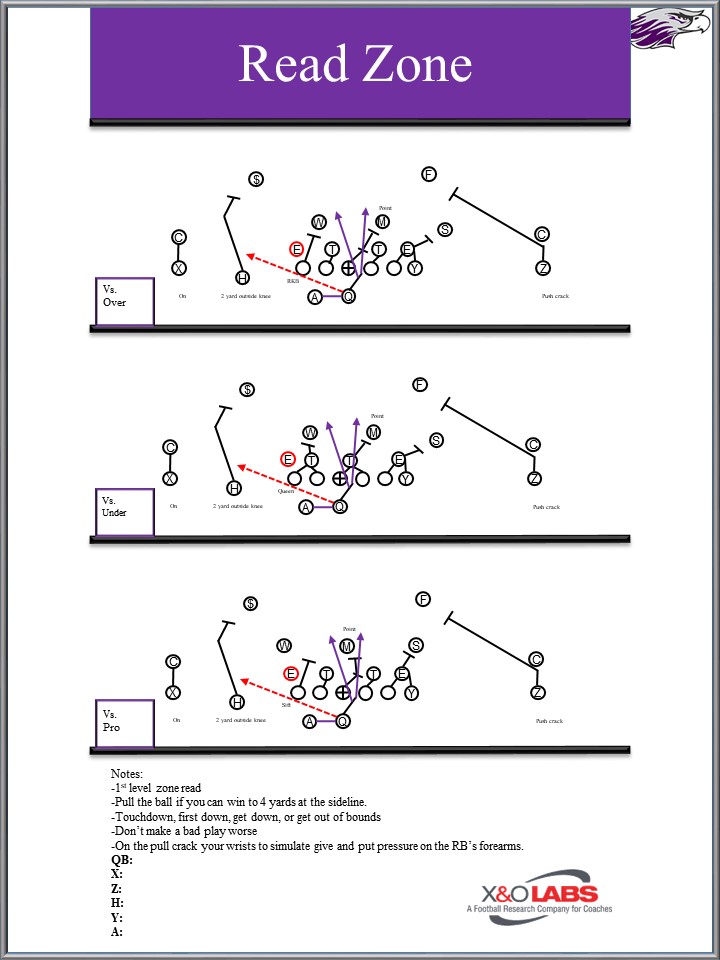
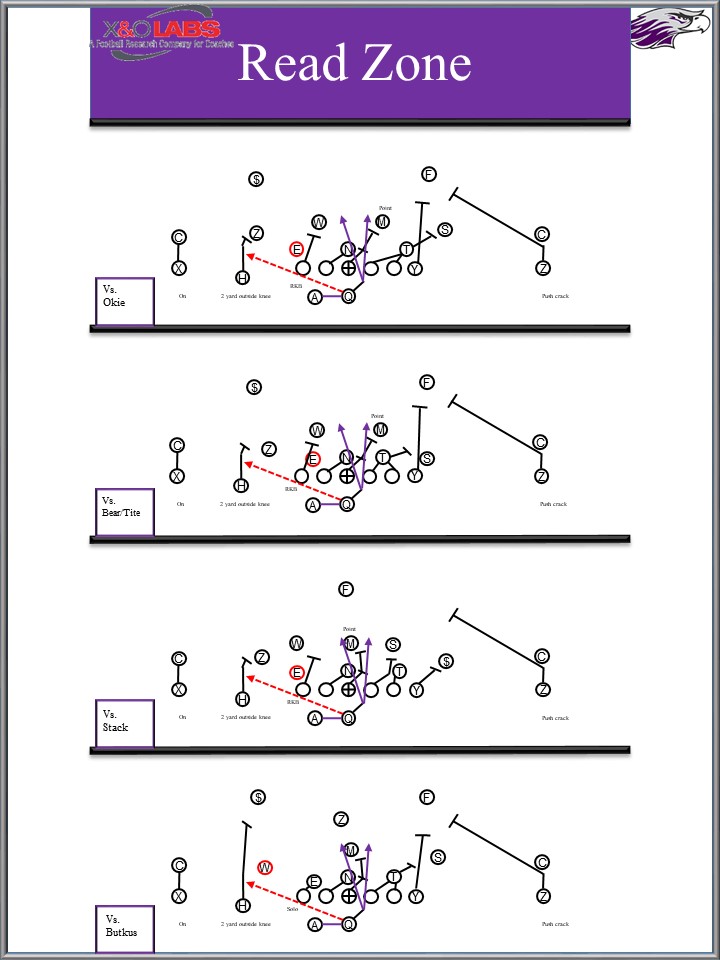
The focus of the rest of this report is solely on how Coach Jennings teaches the backside Tackle to identify and block the “minus one” defender on the backside of the scheme.









